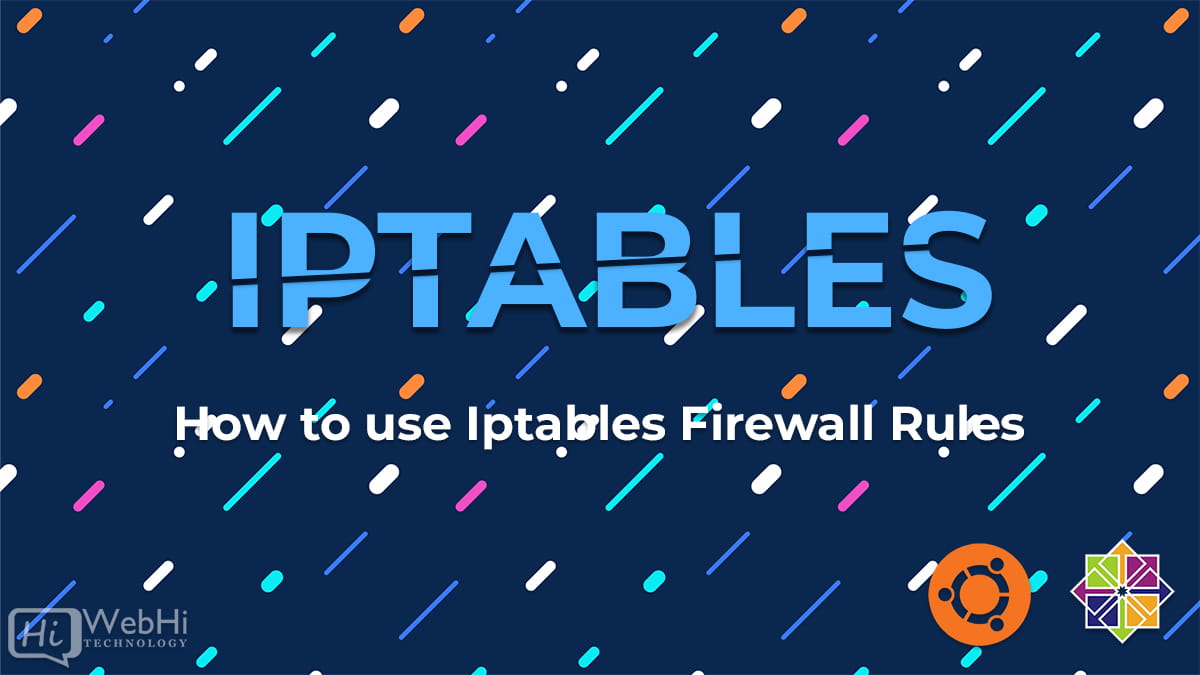
Introduction
Iptables is a powerful Linux utility that allows system administrators to configure the kernel’s built-in firewall. Iptables uses a set of rules to determine how to filter network traffic. Each rule specifies what type of traffic to filter and what action to take on matching traffic.
In this guide, we will discuss some basic iptables rules and commands to help secure your server. By default, iptables blocks all incoming traffic and allows all outgoing traffic. This is not very secure, so we will need to add some rules to make our server more secure.
Basic Syntax
Before we get started, let’s go over the basic syntax for iptables. The general syntax for iptables is as follows:
$ iptables -A <chain> -p <protocol> -s <source> -d <destination> -j <action>Where:
<chain>is the name of the chain (explained below)<protocol>is the protocol of the traffic (usually TCP, UDP, or ICMP)<source>is the source IP address<destination>is the destination IP address<action>is the action to take (usually ACCEPT or DROP)
Chains
Chains are used to group together related iptables rules. There are three built-in chains:
INPUT: for incoming trafficOUTPUT: for outgoing trafficFORWARD: in the case of traffic routed from one network to another.
Or you also create our own custom chains.
Actions
There are two main actions that we can take with iptables: ACCEPT and DROP.
- ACCEPT: allows the traffic through
- DROP: blocks the traffic
Basic Commands
Listing Rules
The iptables -L command is used for listing all the rules in a chain.
$ iptables -L
Chain INPUT (policy ACCEPT)
target prot opt source destination
Chain FORWARD (policy ACCEPT)
target prot opt source destination
Chain OUTPUT (policy ACCEPT)
target prot opt source destination
The -v option is used for listing the rules with verbose output.
$ iptables -L -v
Chain INPUT (policy ACCEPT 0 packets, 0 bytes)
pkts bytes target prot opt in out source destination
Chain FORWARD (policy ACCEPT 0 packets, 0 bytes)
pkts bytes target prot opt in out source destination
Chain OUTPUT (policy ACCEPT 0 packets, 0 bytes)
pkts bytes target prot opt in out source destination Adding Rules
The iptables -A command is used for adding a rule at the end of a chain.
$ iptables -A INPUT -s 192.168.1.0/24 -j ACCEPTThe -I option is used for adding a rule at the specified position in a chain.
$ iptables -I INPUT 2 -s 192.168.1.0/24 -j ACCEPTThe -p option is used for specifying the protocol and --dport option is used for specifying the destination port.
$ iptables -A INPUT -p tcp --dport 22 -j ACCEPTDeleting Rules
The iptables -D command is used for deleting a rule at the specified position in a chain.
$ iptables -D INPUT 2-F : option is used for deleting all the rules in a chain.
$ iptables -F INPUT-X : The option is used for deleting a user defined chain.
$ iptables -X mychain-P This option is used for specifying the default policy for a chain.
$ iptables -P INPUT DROPSaving Rules
The iptables-save command is used for saving the current iptables rules.
$ iptables-save > /etc/iptables.rulesThe iptables-restore command is used for restoring the saved iptables rules.
$ iptables-restore < /etc/iptables.rulesConclusion
In this guide, we learned how to list, delete, save, and restore iptables rules.

2 thoughts on - How to use iptables Firewall Rules on Linux
Do you HAVE TO specify the chain i.e. / input / output / forward?
Yes, you need to specify which chain you want to add the rule to.